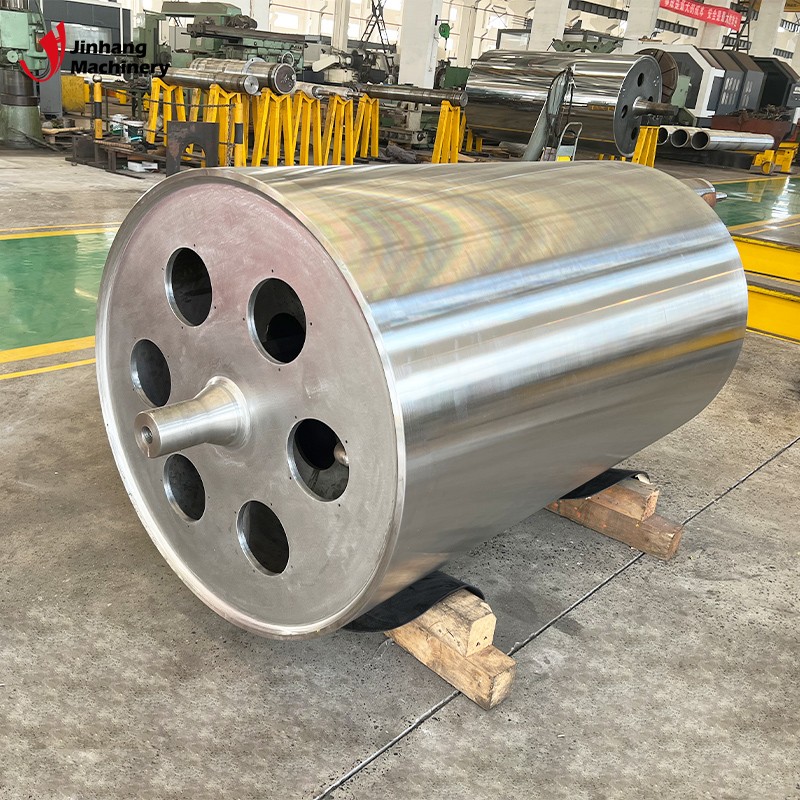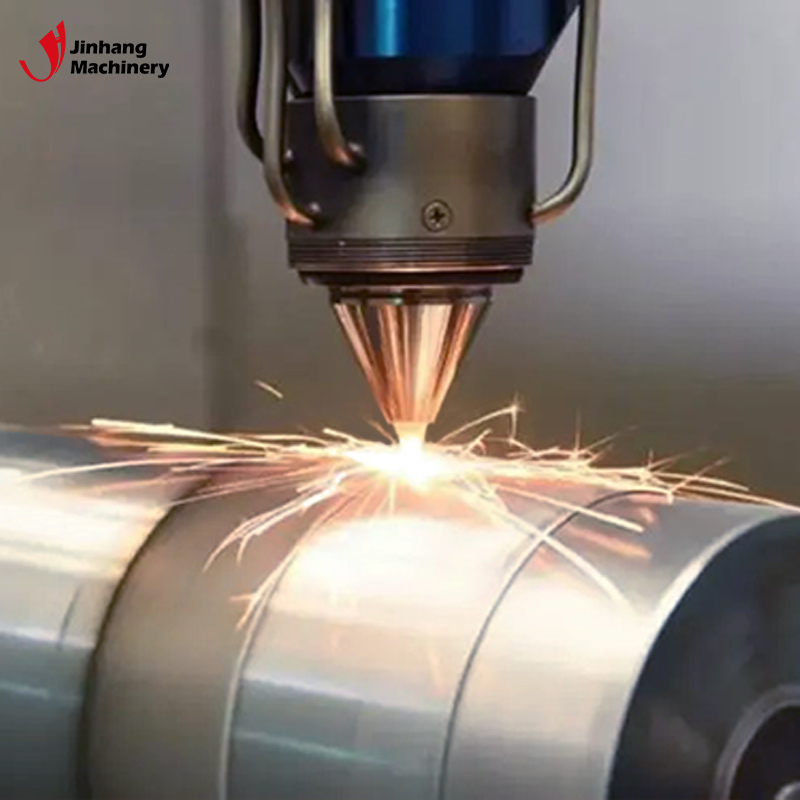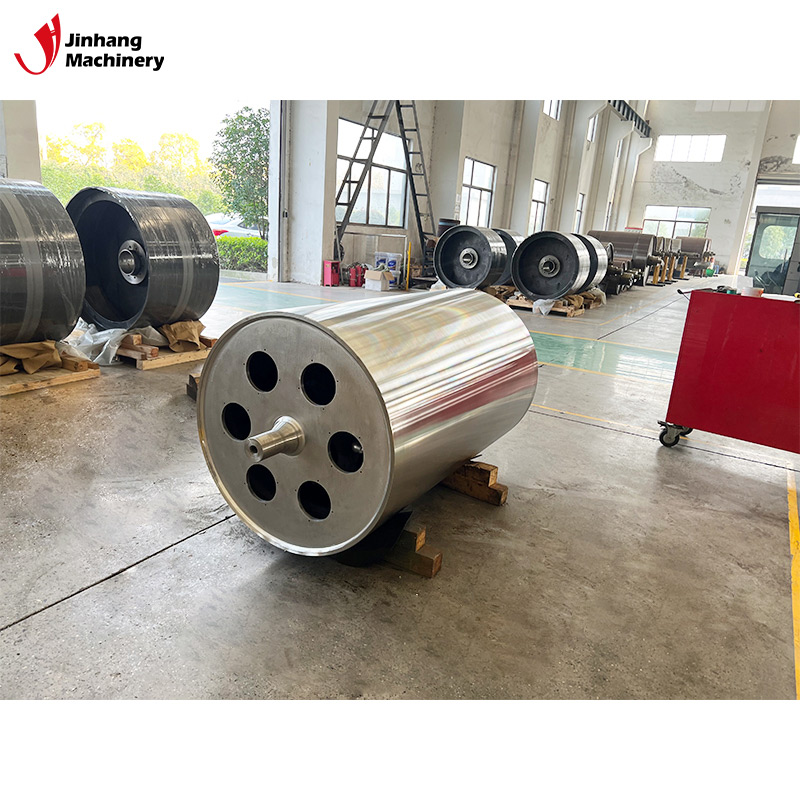How does the cooling roller perform in high-temperature operations?
Cooling rollers play a vital role in industrial production, especially in the fields of steel metallurgy, aluminum, glass manufacturing, paper processing, etc. Its main task is to cool heat-treated metals, glass or other materials under high temperature conditions to ensure the stability of the production process and product quality. In a high-temperature environment, the cooling roller needs to withstand multiple pressures such as strong heat conduction, physical wear and chemical erosion. In order to ensure that the cooling roller can operate stably for a long time under such harsh conditions, it is particularly important to understand the performance of the cooling roller in high-temperature operations and the challenges it faces.
This article will analyze the performance of the cooling roller in high-temperature operations in detail, including its high-temperature resistance, material properties, working principles and various challenges faced, to help industry practitioners better understand the working mechanism of the cooling roller and its optimized design.

What is a cooling roller?
Cooling roller refers to a roller-shaped device that is mainly used to quickly cool high-temperature metals, glass, paper and other materials in the industrial production process. The cooling roller quickly reduces its surface temperature by direct contact with the material or by spraying coolant on the roller surface to avoid deformation or cracking of the material due to uneven thermal stress.
The working principle of cooling roller is based on the principle of heat conduction. When high-temperature materials are transferred to cooling roller, the roller surface absorbs heat, resulting in a temperature rise, and then conducts this heat to the coolant (such as water, oil or special coolant) or the cooling system inside the roller body. Through high-speed rotation and convection of coolant, the roller effectively conducts heat to the cooling system, thereby achieving a rapid temperature drop.
One of the biggest challenges cooling rollers face when working at high temperatures is the degradation and aging of material properties in high-temperature environments. Therefore, the material and structural design of cooling rollers must be carefully optimized to cope with the effects of thermal stress, wear, corrosion, etc. caused by long-term high-temperature operation.

How does cooling roller perform in high-temperature operations?
1. High-temperature resistance and thermal stability
The high-temperature resistance of cooling rollers is the basis for their stable operation in high-temperature operations. In order to maintain a stable working state, cooling rollers need to withstand long-term thermal shock in high-temperature environments, and their materials must be able to maintain a long service life without deformation or thermal fatigue.
● Material selection: cooling rollers are usually made of high-temperature resistant alloy materials, stainless steel, cast steel or refractory ceramics. These materials have good thermal conductivity and can quickly transfer high temperature to the cooling system to avoid overheating of the roller itself. In addition, elements with high temperature resistance, oxidation resistance and corrosion resistance, such as chromium, molybdenum, titanium, etc., are often added to alloy materials to improve the high temperature stability of the material.
● Thermal expansion and thermal stress: The material of the cooling roller usually has a low thermal expansion coefficient to reduce deformation caused by temperature difference. During high temperature operation, excessive temperature difference will cause thermal stress in the roller body, and even cause cracks or fractures in the roller body in severe cases. Therefore, the thermal stability of the roller body material is particularly critical. Excessive temperature difference and uneven heating can easily cause thermal fatigue of the cooling roller and reduce its durability.
2. Anti-oxidation and anti-corrosion ability
In high temperature environment, the cooling roller faces not only thermal shock and thermal expansion problems, but also chemical factors such as oxidation and corrosion. In high temperature operations such as metallurgy, glass manufacturing and paper processing, the roller surface may directly contact corrosive substances such as oxygen, acid, alkali, solvents, etc. Therefore, the anti-oxidation and anti-corrosion ability of the cooling roller is crucial to its performance in high temperature working environment.
● Oxidation reaction: In an environment with more oxygen, high temperature will accelerate the oxidation reaction of the roller surface material and form an oxide film. Although some materials (such as stainless steel) can self-generate a protective film at high temperatures, if the oxide film is damaged, the roller surface will be easily corroded, resulting in performance degradation. Therefore, when selecting the material of the cooling roller, it is necessary to ensure that it has strong oxidation resistance.
● Corrosion protection: Acids, alkalis or salts in the coolant, or sulfides, chlorides and other substances in the air, may cause corrosion on the surface of the cooling roller. These chemicals react with the metal on the surface of the roller body, which will accelerate the damage of the roller. Therefore, alloys or coating materials with excellent corrosion resistance should be selected in the cooling roller material.
3. Wear resistance
The cooling roller not only needs to withstand high temperatures, but also needs to withstand the friction between the metal surface, paper or other material surface and the roller surface during operation. Especially in high-speed or high-pressure working environments, the surface of the cooling roller is prone to wear.
● Hardness and wear resistance: High-hardness materials generally provide strong wear resistance, so cooling rollers usually use hardened materials to improve their wear resistance. Hardened layers or coatings (such as hard chrome coatings, nitriding treatments, etc.) can effectively increase the hardness of the cooling roller surface and resist wear caused by friction.
● Lubrication and cooling: Coolant plays an important lubricating role on the surface of the cooling roller, which can reduce the heat generated by friction and thus reduce wear. In high-temperature operations, the coolant must not only have high heat conductivity but also good lubrication properties.
4. Thermal fatigue and cracks
Another major challenge for cooling rollers in high-temperature environments is thermal fatigue. Long-term temperature fluctuations and thermal shocks may cause cracks on the surface of the cooling roller and may even cause the roller body to break. Thermal fatigue is mainly manifested as:
● Stress concentration caused by temperature difference: During the operation of the cooling roller, the rapid increase and sharp decrease in temperature will cause a large temperature gradient on the roller surface. Due to the different expansion degrees in different areas, stress concentration may occur on the roller surface, which will cause cracks under long-term action.
● Crack expansion: Once cracks are formed on the surface of the cooling roller, as the cooling roller operates for a long time, the cracks will continue to expand, eventually leading to roller failure. Therefore, in high-temperature operations, it is necessary to regularly check the cracks and damage on the roller surface and repair or replace them in time.
5. Adaptability to thermal shock and rapid cooling
The most common operating mode of cooling rollers in high-temperature operations is to withstand thermal shock. When hot materials come into contact with the cooling roller, the roller surface will quickly absorb a large amount of heat, causing its surface temperature to rise sharply. At this time, the thermal conductivity and thermal diffusion capacity of the roller surface material will determine whether it can effectively cope with thermal shock.
● Thermal shock tolerance: The thermal conductivity of the cooling roller material determines its tolerance to thermal shock. Excellent thermal conductive materials can quickly disperse heat, avoid excessive temperature differences on the roller surface, and thus reduce the damage caused by thermal shock.
● Thermal expansion and stress distribution: The thermal expansion coefficient and stress distribution of the material play a key role in the thermal shock process. The selection and design of cooling roller materials must take into account the temperature changes in different parts to avoid cracks or failures caused by stress concentration.

Maintenance and care of cooling rollers in high-temperature operations
Although the cooling roller uses high-performance materials and is carefully designed to meet the challenges in high-temperature operating environments, long-term high-temperature operations will still have a certain impact on the service life of the roller. Therefore, regular maintenance and care are essential to extend the service life of the cooling roller and improve work efficiency.
1. Regular inspection and testing
● Surface crack detection: Cracks or wear may appear on the surface of the cooling roller. Regularly using non-destructive testing technology (such as ultrasonic testing and X-ray inspection) to inspect the roller body can detect potential faults early and avoid greater losses caused by crack expansion.
● Wear inspection: The degree of wear of the roller directly affects its cooling effect and operating stability. Regularly checking the wear of the roller body and replacing or repairing severely worn parts in time will help extend the service life of the roller.
2. Maintenance of coolant
The coolant not only plays a role in heat conduction, but also lubricates and protects the surface of the cooling roller. Regularly replace the coolant to ensure that the coolant is clean and sufficient, which can effectively reduce wear and corrosion and ensure the normal operation of the cooling roller.

Buy Customized Rolls and Cylinders – High Quality at Affordable Prices
Looking to buy high-quality rolls for your industrial needs? JH Machinery specializes in producing custom-made rolls that are used across multiple industries such as metallurgy, packaging, and automotive testing. Our product range includes polyurethane rolls, rubber rolls, and electroplated rolls, all tailored to suit your specifications. We offer competitive pricing and the option for bulk purchases at discounted rates. Purchase directly from our China-based factory and take advantage of affordable prices and customized solutions. Contact us for a quote or to learn more about our products.
